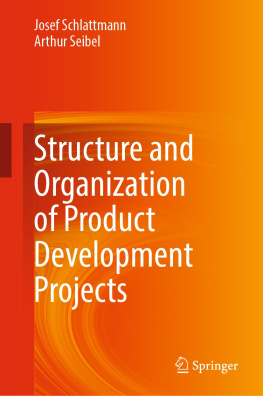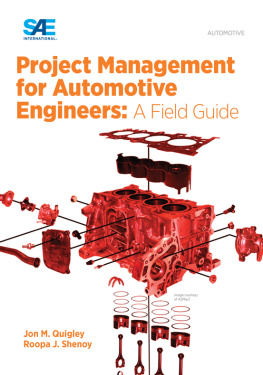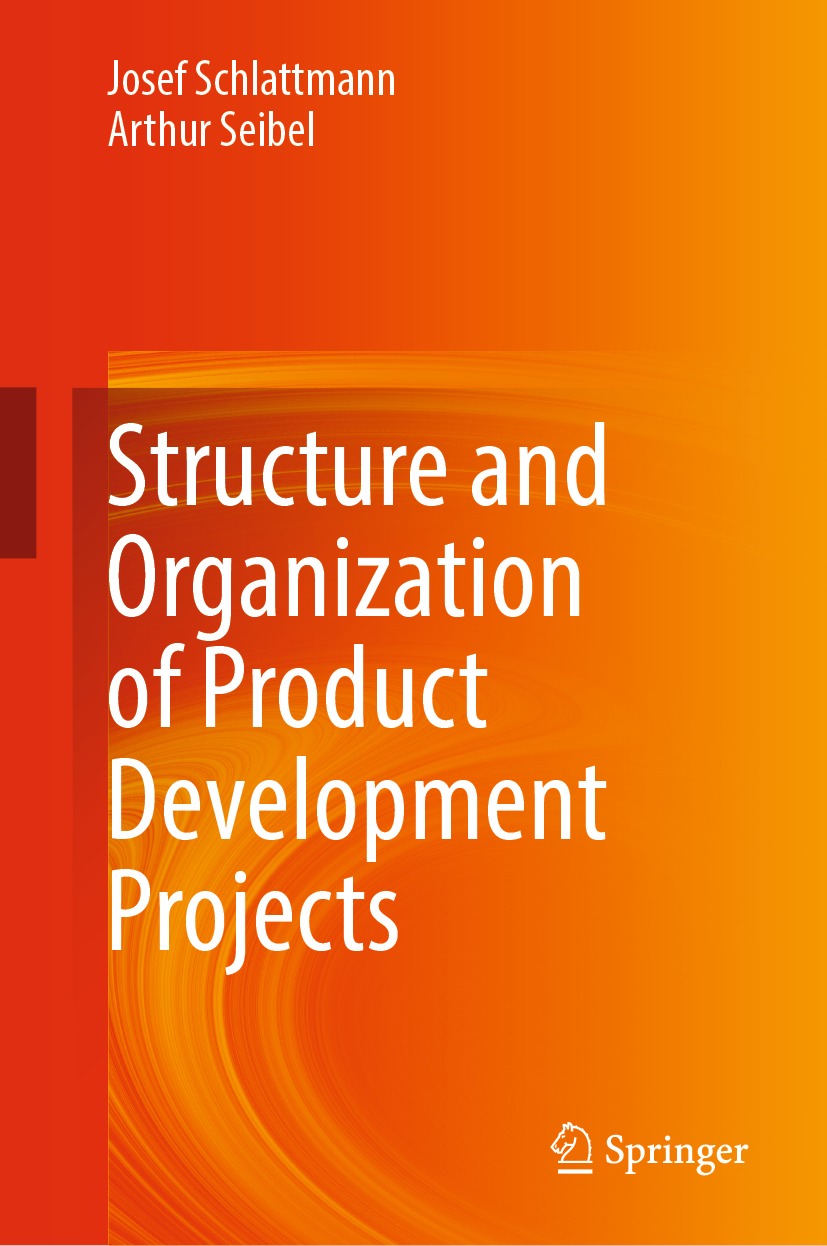Josef Schlattmann
Workgroup on System Technologies and Engineering Design Methodology, Hamburg University of Technology, Hamburg, Germany
Arthur Seibel
Fraunhofer Research Institution for Additive Manufacturing Technologies IAPT, Hamburg, Germany
ISBN 978-3-030-81045-0 e-ISBN 978-3-030-81046-7
https://doi.org/10.1007/978-3-030-81046-7
Translation from the German language edition: Aufbau und Organisation von Entwicklungsprojekten by Josef Schlattmann, and Arthur Seibel, Springer-Verlag GmbH Deutschland 2017. Published by Springer-Verlag GmbH Deutschland. All Rights Reserved.
The Editor(s) (if applicable) and The Author(s), under exclusive license to Springer Nature Switzerland AG 2021
This work is subject to copyright. All rights are solely and exclusively licensed by the Publisher, whether the whole or part of the material is concerned, specifically the rights of translation, reprinting, reuse of illustrations, recitation, broadcasting, reproduction on microfilms or in any other physical way, and transmission or information storage and retrieval, electronic adaptation, computer software, or by similar or dissimilar methodology now known or hereafter developed.
The use of general descriptive names, registered names, trademarks, service marks, etc. in this publication does not imply, even in the absence of a specific statement, that such names are exempt from the relevant protective laws and regulations and therefore free for general use.
The publisher, the authors and the editors are safe to assume that the advice and information in this book are believed to be true and accurate at the date of publication. Neither the publisher nor the authors or the editors give a warranty, expressed or implied, with respect to the material contained herein or for any errors or omissions that may have been made. The publisher remains neutral with regard to jurisdictional claims in published maps and institutional affiliations.
This Springer imprint is published by the registered company Springer Nature Switzerland AG
The registered company address is: Gewerbestrasse 11, 6330 Cham, Switzerland
Preface
Product development projects do not necessarily have to be complex if they are structured and organized in the right way; however, they often become complex when their manageability reaches natural limits or when coordination and project management issues are not clearly defined and comprehensible for all parties involved. In addition, leadership of employees as well as projects must be learned; otherwise, it is usually left to coincidence, and in most university education courses, it still comes up far too short.
The structure of this handbook is based on the organization and process of a product development project, such as those found in medium-sized mechanical engineering companies. The organization concerns all areas directly involved from the idea to the marketable product and includes all the necessary steps (methodical procedure) as well as the associated executing bodies so that the organization can be described as a system in its entirety and the corresponding process as systematic.
There are many methodical tools and guidelines for a systematic approach. The main advantages of using such an approach are, among others:
The design process in particular can be better managed.
The methods can be used as tools to significantly support product development.
A goal-oriented approach creates the necessary freedom for creative action.
The expansion of pattern formation, and especially the promotion of employee creativity, increases the probability of creative leaps.
Consequently, the importance of a systematic approach to product development cannot be overestimated.
This handbook would like to bring methods proven in industrial practice and taught in numerous lectures and seminars to a larger audience to make the innovation work of the product developer substantially more effective, particularly in small- to medium-sized mechanical engineering companies. The decisive factor here is the insight that new products are not simply generated by designing and organizing but are created by people, since behind the technical difficulties, there are, in fact, always hidden human problems that cannot be overcome by functional measures alone.
To avoid disrupting the flow of reading, we have deliberately omitted the additional formulation of female pronouns. We would therefore like to point out that the exclusive use of the masculine form should of course be understood as independent of gender.
We would like to take this opportunity to thank Prof. Dr.-Ing. Walter Jorden, the former head of the Laboratory for Engineering Design at the University of Paderborn, on whose Paderborn Design School this handbook is largely based. We would also like to thank the publishing house for the excellent cooperation and printing of this handbook.
Josef Schlattmann
Arthur Seibel
Hamburg, Germany
Spring 2021








